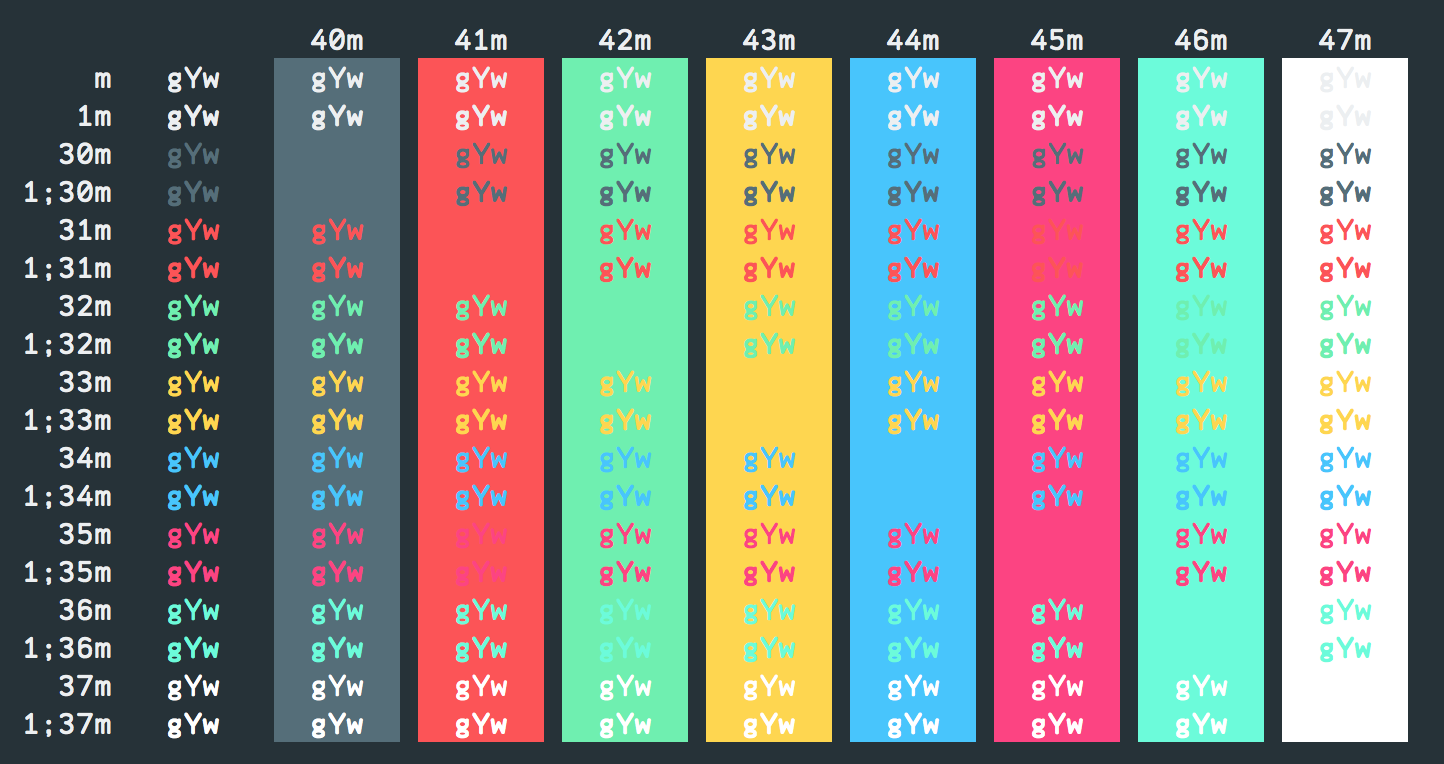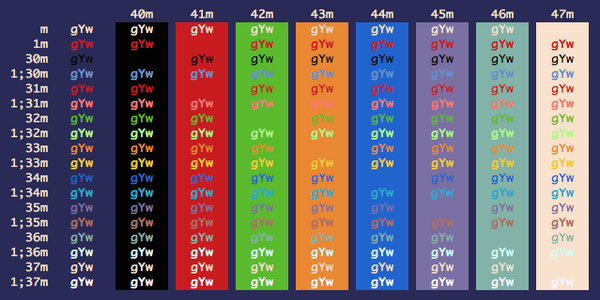
To fix this, repeat the installation of the xterm-256color-italic and screen-256color-italic TERM entries. This is because the remote machine doesn’t have the database entry we just installed locally. If you ssh in to a remote machine from your tmux session, you might get some errors related to your new TERM. Starting a new tmux session and opening vim, you should see what we’re after: italics! Caveats 🔗 I suspect there’s a cleverer way, but I had to kill my tmux process to bring the changes into effect. set -g default-terminal "screen-256color-italic" $ tic screen-256color-italic.terminfoĪdd a line to your nf to tell tmux to use the new TERM. terminfo is replacing all instances of xterm with screen. If you squint, you’ll notice the only difference to the previous. Screen-256color-italic|screen with 256 colors and italic, # A screen-256color based TERMINFO that adds the escape sequences for italic. So, as before, copy the contents below in to a file, this time called screen-256color-italic.terminfo.
ITERM2 COLORS INSTALL
To fix this, we need to install a new TERM entry, like we did before, and then tell tmux to use it. This is because the TERM for a tmux session is, by default, different to that of a non-tmux session. If you open up a new tmux session, and then open vim, you’ll notice the italics aren’t working anymore. You could also edit your colorscheme directly by changing the comment highlighting declaration. Then open up a new vim session and type a comment. vimrc file after anything else theme related (like colorscheme). To enable italicised comments in vim, add this line to your. It differentiates them one step more from the surrounding code, and it makes sense semantically too, as a comment is treated very differently from anything else in the source. If it’s different, check you’re dotfiles (like. If you don’t see italicised text, something else might be overriding the TERM environment variable.Ĭheck its value is xterm-256color-italic. If you close and reopen iTerm2, executing the following should show italicised text. The new entry probably won’t be in the list, but we can just type it in. This is done in the terminal pane of whatever profile you’re using. $ tic xterm-256color-italic.terminfoįinally, we need to tell iTerm2 to use this new TERM, xterm-256color-italic, by default. This file needs to be processed and added to the TERM database. Xterm-256color-italic|xterm with 256 colors and italic,Ĭreate a file called xterm-256color-italic.terminfo, where ever you like, with the above contents. # A xterm-256color based TERMINFO that adds the escape sequences for italic. Luckily, one has already been made for us, courtesy of Stefan Schüssler. (This is not a subject I’m familiar with, but worrying about the technicalities here doesn’t seem to be necessary.) Next, we need to tell the terminal what italic actually means, which is done by using a special TERM entry. (There’s also Menlo, which is included with OS X.) iTerm2 🔗įirst, make sure it’s enabled in your terminal profile.
ITERM2 COLORS FREE
If you don’t have it, you can probably find it online, or use a free typeface with an italic variant like Ubuntu or Anonymous Pro. I like Consolas, which is included in all recent versions of Windows, and will be present on an OS X system if Microsoft Office has been installed.

In order to see italicised text at all, we need a typeface with a italic variant. I’ll explain what I did to get italics in iTerm2, tmux, and vim, as shown below, in this post. MacVim has native support for italics, and although iTerm2 has supported italics for sometime, getting my italics back proved to be somewhat cumbersome.

This one is about enabling italics in these three tools.

I like it, but the setup’s for another post.
ITERM2 COLORS WINDOWS
I felt I was losing efficiency switching between windows though, and losing power by not exploiting things like splits.Ĭurrently, my setup is using iTerm2 with tmux to manage terminal splits and ‘windows’, and then regular old vim to edit. I’ve always used iTerm2 as my terminal, and, since switching to vim about 18 months, have used MacVim as my editor. Recently, I’ve been trying to restrict my coding workflow to the terminal. directory writable to others, with sticky bitġ1.Using tmux version 2.1 or above? Check out the update. The order of the attributes are as follows:ġ0. Make sure you select the BSD option for macOS. It will work in both MacOS/FreeBSD and Linux. It will even generate the "code" for you. However, there's a great online utility to see what each of the colors mean and look like in real time. The first two characters refer to directories having a bold blue foreground and a light grey background. The the colors are set by each bit above the first being foreground and the second being background. In your ~/.bash_profile add the following: export LSCOLORS="EHfxcxdxBxegecabagacad"Īlias ls='ls -lGH' <-This shows in list format, follow symlinks colorized


 0 kommentar(er)
0 kommentar(er)
